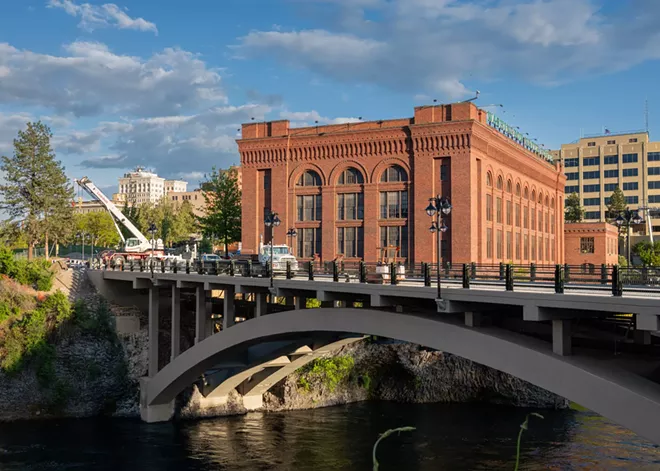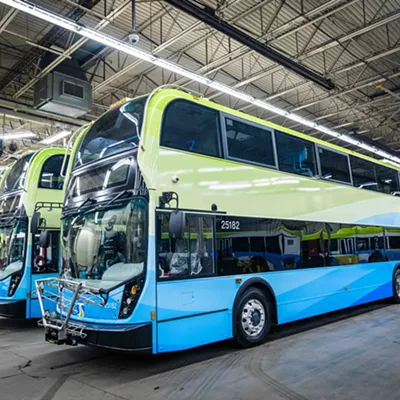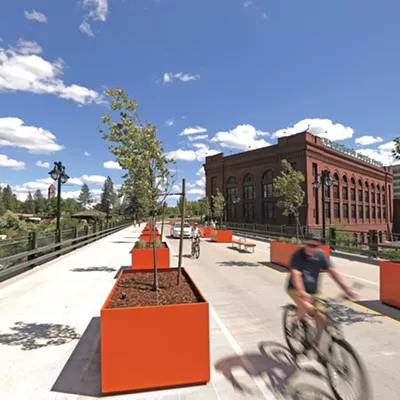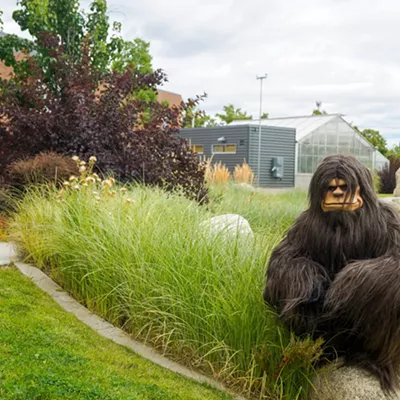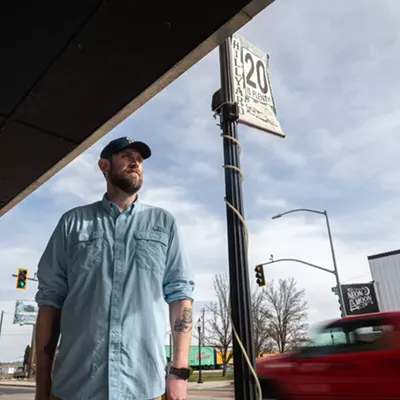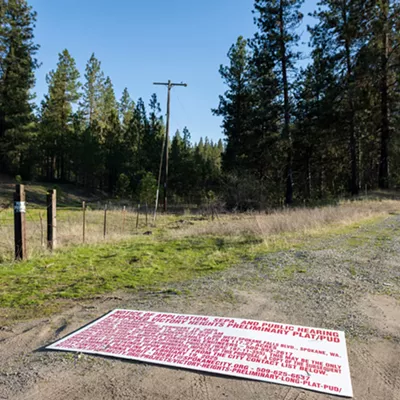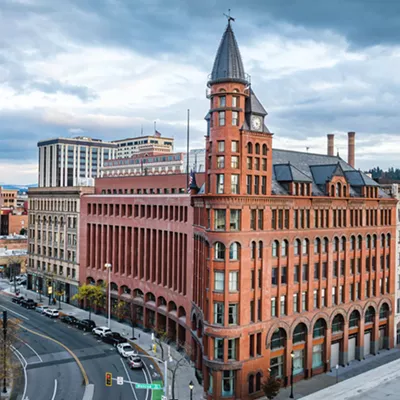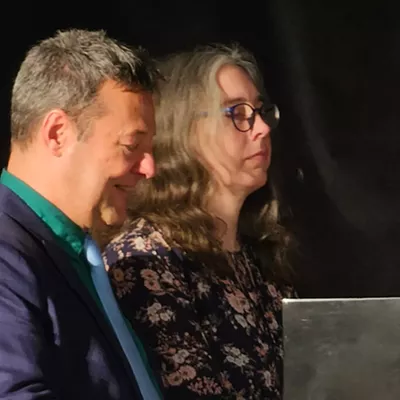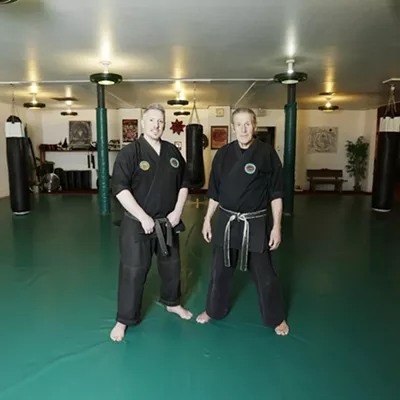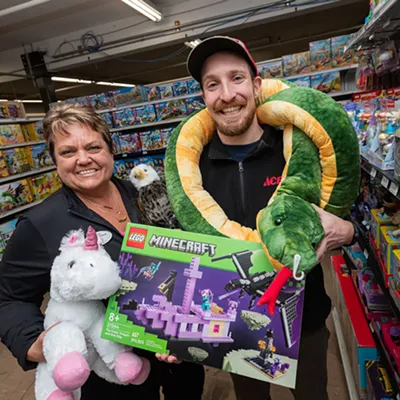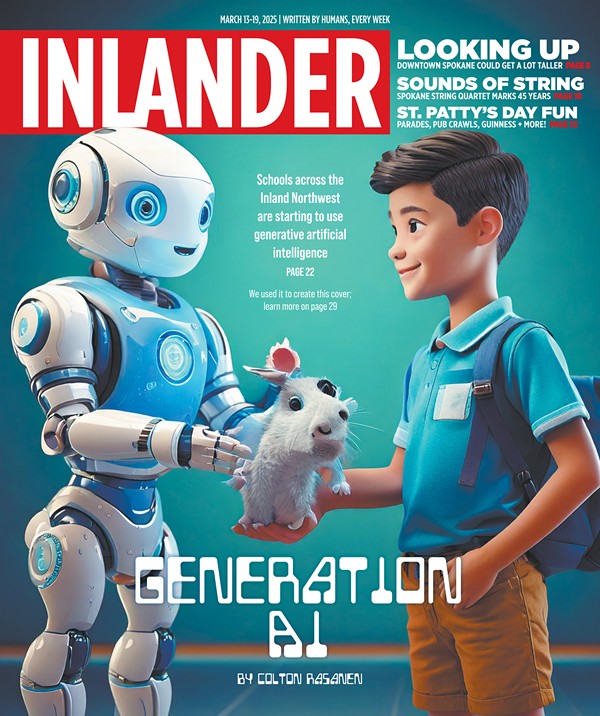Two years after major renovations were expected to be complete, and a full five years after it was closed to traffic, the Post Street Bridge is finally slated to reopen next week.
A small, private event associated with the Expo '74 commemorative anniversary is scheduled for the evening of June 4. Then, the city's ribbon-cutting ceremony is set for 11:30 am on June 5.
The previous iteration of the 333-foot bridge had straddled the Spokane River for more than a century. In 1917, it was built with an open spandrel deck arch design, replacing a steel structure that had been there since the 1890s.
Unfortunately, that first rebuild wasn't without incident. While construction was underway in 1915, the temporary structure collapsed into the surging waters below. As many as 30 workers went down in the cascade of concrete and framing; three died.
Twenty years after its fateful completion, a third arch was added when the reinforced steel and concrete bridge was widened to 40 feet to better accommodate two lanes of automobile traffic. Pedestrian sidewalks were installed on either side. This augmented Post Street Bridge would come to accommodate somewhere close to 9,600 daily car crossings.
Concerns about its structural integrity, however, had made the bridge a candidate for repair or replacement since as far back as 1984.
In 1989, the bridge was bundled into a broader, ultimately abandoned plan to build a one-way Lincoln Street Bridge. Had it been successful, the controversial project would have seen the Post Street Bridge become a pedestrian section of the Centennial Trail.
While alternate visions for its future were floated, the bridge was restricted to one-way vehicle traffic in 2013 in the interest of safety. Its daily vehicle count subsequently fell by nearly 80%, and it was completely closed to motor vehicle traffic in 2019.
HOW TWO YEARS BECAME FOUR
The recent reconstruction effort was therefore long overdue.
Yet there was already some justifiable uncertainty about the project's timeline when work began in June 2020. COVID-19 restrictions were in force, and the early ripple effects of the pandemic, such as labor shortages and supply-chain issues, were starting to emerge.
Social distancing requirements hampered the construction project, as people working in teams struggled to stay 6 feet apart, which slowed the progress, says Tobin Smith, senior project manager at Kuney Construction, the primary contractor on the project.
"Along with that, you know, there was the fact that these were 100-year-old arches," Smith says. "It's like any sort of rehab, whether it be at your house or anywhere. You open [it] up and you realize, 'OK, this is bad. This is worse than we thought.'"
As a result, the crews could only work on 8-square-foot sections at a time. They would chip away the old, compromised concrete and then patch the area, progressing systematically along the entire length of each arch.
"When it was all said and done, it looked like kind of a patchwork quilt before we painted it," Smith says.
The painstaking nature of the refurb raises the question: If the bridge's condition was so poor, why not demolish and replace it outright rather than preserve large parts of it?
According to engineer Mark Serbousek, who oversaw the project's design for the city, retaining the existing arches became the preferred solution over, say, a simpler girder-style structure, for reasons of cost, practicality and aesthetics.
"We went through many, many different schemes of what to do," Serbousek says. "It appeared at the time that keeping the arches and utilizing and repairing them was cheaper and you still got the same outcome where you get another hundred-year bridge. And it is one of our iconic bridges that has the arches that are symbolic of our city."
Before breaking ground in 2020, the cost project was forecast to be $18.5 million. Four years later, the final tally is closer to $22 million. The funding sources included $12 million in federal bridge improvement funding, $5 million from the state Department of Ecology and $7 million in local utility funds, with the $24 million total including 10% in administrative reserves.
A NEWER SEWER
One of the trickiest aspects of the Post Street Bridge reconstruction had nothing to do with arch repair. The project's most complicated element was the rerouting of an aging sewer main that could be seen on the bridge's east side.
Over the course of about 30 hours in mid-May of last year, crews from Kuney, KPFF engineers and city workers replaced the old 54-inch wastewater pipe with a new 60-inch pipe that now runs just under the bridge's deck. The new pipe is far less visible than the rusted sewer line that was once a prominent eyesore on the former bridge.
Bypassing the old line was no easy feat. As one of the primary sewer lines to downtown Spokane, it couldn't be shut off. That meant 18,000 gallons of wastewater per minute had to be safely diverted while the new pipe was connected above the river.
Months of planning went into the effort, which involved storing some of the effluent in the nearby 2.2-million gallon combined sewer overflow tank on Spokane Falls Boulevard that had only been finished in the summer of 2020.
The switchover was intentionally scheduled to start during the early hours of the day.
"We tried to get it with low flow when everybody's asleep and not flushing their toilets and taking showers and things," Serbousek says. "We had extra pumps in there, backups, so if we needed to pump more, we could. You always plan for the worst and hope it never happens."
The planning paid off. The bypass and recoupling worked without a hitch.
BACK TO BUSINESS
With that stretch of Post Street closed to vehicular traffic and pedestrians throughout the project, City Hall experienced firsthand the effects of restricted access that businesses typically endure during major construction projects.
Across the river, on the opposite end of the work-in-progress, Anthony's had to weather a double whammy of pandemic restrictions and construction detours for customers.
But while the seafood restaurant retained some northside access during the project, Mobius Discovery Center on the south side of the bridge was largely isolated and had heavy machinery sitting right on its doorstep. That didn't just impede foot and car traffic, it also prevented buses — the preferred transportation for class outings and field trips — from pulling up to the building.
Amanda Gilliam, marketing manager at Mobius, is surprisingly sanguine about the challenges.
"In a way, it wasn't terrible, because of COVID," she says. "That would have impacted foot traffic anyway."
The children's museum was able to use its front row seat to the engineering feat as a learning opportunity.
"We have a third-grade engineering workshop that takes place in our STEAM lab, and throughout the whole process, they could look out our windows and see an actual bridge being built while they were building a bridge of toothpicks and gumdrops," Gilliam says.
Even the construction equipment outside wasn't such a bad deal, she says.
"Kuney have been really longtime supporters of Mobius since before this project, and they were a really great neighbor during construction," she says. "They were on hand for multiple projects that required heavy lifting to help get the Children's Museum exhibits into [this] location as we unified as Mobius Discovery Center. Having the forklift on speed dial was super handy."
All the same, she's looking forward to Mobius being "super accessible," thanks to the new connections and pathways that the revamped bridge will provide.
A MULTIMODAL BRIDGE
The new Post Street Bridge is inherently multimodal. Similar to its configuration for the past decade, a single northbound lane will move vehicle traffic out of downtown. There are also improved, dedicated bicycle and pedestrian lanes with amenities like benches and planters that echo the design scheme of Riverfront Park.
The parking lot on the bridge's southeast corner is being eyed for ADA accessibility upgrades. School and charter buses also now have a dedicated drop-off space in front of Mobius.
Beyond that, the Post Street Bridge now serves as an access and waypoint on the new Great Gorge Loop Trail. The 3.5-mile biking and walking trail runs along both banks of the Spokane River between the Post Street Bridge and the Sandifur Bridge at People's Park to the west.
Continuing some of the more well-received intentions of the 1989 Lincoln Street Bridge project, Post Street's pedestrian pathways will also be visibly incorporated into the Centennial Trail.
Nick Hamad, who heads planning and development at the city's Parks and Recreation department, explains that this conscious overlap with the trail system was a response to public feedback and expert input. One of the most salient themes to emerge from the Riverfront Park master planning process was that the river should be viewed as a "promenade" and an accessible centerpiece to any path network.
"On Post Street, one of the real priorities we heard from the community was to sort of downplay the role of the automobile and really 'up-play' the experience for pedestrians and cyclists because you can get to the river in a way that you really can't get in other locations," he says.
Both Hamad and Kirstin Davis, communications manager for the city's public works department, note that all of these elements are part of an intentional placemaking strategy — a way to make the Post Street Bridge a landmark in its own right while also creating a sense of continuity between Riverfront Park, nearby Huntington Park and A Place of Truths Plaza.
"It's just going to be a pleasant experience of traveling," says Davis, highlighting the bridge's potential appeal as an Instagram backdrop. "The North Bank has seen so much improvement and growth, with so many more opportunities and venues and all of that. So having this additional gateway is really going to enhance that experience and accessibility between Riverfront Park, the downtown core and the North Bank."
"Not to wax poetic," Hamad adds, "but if you look back all the way to the Olmsteds when they visited in the early 1910s, there was this idea of a great Spokane River gorge, right? The bridges are a huge part of that experience for us today. And so this really does represent, I think, the completion of decades of work to create public access in and around the river corridor in the way that was envisioned over a hundred years ago." ♦

